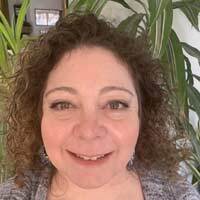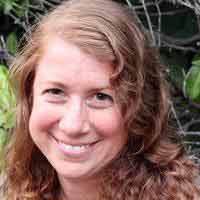When you click on a sponsoring school or program advertised on our site, or fill out a form to request information from a sponsoring school, we may earn a commission. View our advertising disclosure for more details.
“It’s a growing field. It’s never going to stop growing. So for people who want to go into it, they can go into so many different areas of ultrasound. There’s the physics and the research, the high-risk OB or the general, the emergency care. There are so many things that you can do: cancer, ophthalmology…It offers everything.”
– Carrie Bowen, Medical Sonographer, Secretary of the American Institute of Ultrasound in Medicine (AIUM)
October is Medical Ultrasound Awareness Month (MUAM), an annual event to promote awareness of diagnostic medical ultrasound as a healthcare tool and profession. This year, MUAM is sponsored by several organizations including the American Institute of Ultrasound in Medicine (AIUM), the American Registry of Diagnostic Medical Sonographers (ARDMS), the Society of Diagnostic Medical Sonography (SDMS), and others.
In the following interview, sonographer and AIUM secretary Carrie Bowen speaks about the rewards and challenges of this career, which requires both expertise in patient interaction and technical skills.
Meet the Expert: Carrie Bowen, RDMS, RDCS

Carrie Bowen is a registered diagnostic medical sonographer and registered diagnostic cardiac sonographer with nearly two decades of experience. She’s currently a sonographer and ultrasound educator at the Perinatal Associates of New Mexico. She also serves as a secretary of the American Institute of Ultrasound in Medicine (AIUM).
Interview with Ultrasound Educator & Sonographer Carrie Bowen
MedicalTechnologySchools: Could you tell us about your work in ultrasound?
Bowen: I’ve been doing high-risk, obstetrical ultrasound for about 19 years now. When I was in the middle of school, I decided that I want to specialize in high-risk OB. It was by the grace of God that I got a clinic where they allowed students to be part of the high-risk community because, normally, it’s a very stringent field and you have to have a lot of years of experience before you get in.
I fell in love with it, and I love it now probably more than when I first started out. I have learned so much in this field. It’s gratifying. It’s heart-wrenching. It’s exciting. It’s everything to me…
I decided to learn everything I possibly could about ultrasound—about all the anomalies, the disease process, how maternal diseases affect babies, and vice versa. Through the years I moved up into ultrasound management, and currently, I’m the practice ultrasound educator. So my role is basically being in charge of the training of new sonographers; researching; letting everybody know what new and upcoming things are going on; [having] one-on-one contact with the perinatologists, who specialize in the high-risk patients; adjusting our protocols; and [doing] everything that we need to stay state-of-the-art.
MedicalTechnologySchools: It sounds like you’ve moved into the perfect role in ultrasound education.
Bowen: It is very hands-on still. I don’t ever want to stop scanning. It’s my passion, and so when I’m training the new sonographers, it’s at a clinical level. I’m in the ultrasound room with them. I’m teaching them about ultrasound physics, the pathology, and everything that they need to know. I don’t ever want to give that up, so [my role] is a combination of admin and clinical, which is what I love. I love the patient interaction. I love getting to know these babies, putting the puzzle pieces together to figure out what’s going on.
MedicalTechnologySchools: Tell us about your role with the AIUM.
Bowen: It’s a multi-faceted role…In the practice, I’m in charge of the practice accreditation for the ultrasound side of it, so keeping track of all the sonographers, the CMEs, the physician’s CMEs, the image quality, and submitting all of the images… [That’s] the clerical part of it: gathering all of the images to submit when practice accreditation is up, and also the quality assurance program: making sure that all of our studies are up to par with AIUM standards.
Sonographers have to have a specific number of credits or continuing medical education (CME) to prove that we’re staying up to par with our license. Our license has to be renewed every year, so we have to show that we’re doing ongoing education on our own time. And then the physicians also have to have their own continuing medical education in the field that we specialize in.
In March, I was elected secretary for the sonography division of AIUM. So that’s a brand new role for me, and I share that role with two other people…The three of us are tackling this head-on: being the spokespeople for the ultrasound community for AIUM, making it more personable, and creating more educational resources for sonographers and the physicians out there. That’s been a really nice experience so far.
MedicalTechnologySchools: What are the rewards of working in medical ultrasound?
Bowen: It’s the challenge. Every day that we scan, we’re using so much physics and we’re having to extract so much information from our brains—and we’re having to put puzzle pieces together.
On one hand, we’re talking to the patient, where on a superficial level, we’re being the entertainer. We’re explaining everything that we’re seeing, and then, in the back of our head, we’re putting everything together about how is the brain hooked up, how is the heart hooked up, how are all of the organs hooked up.
And so it’s the challenge that I love. But it’s also the patient interaction. I get the joy of being in a room with a patient for a minimum of 45 minutes, talking to them. They’re high-risk patients. They’re scared. They’re nervous and to be able to communicate with them and put them at ease, or be able to hug them and cry with them—and to be able to rejoice with them. I love it all.
Years ago, [you weren’t] allowed to show any emotions to patients. I teach the newer sonographers that we’re not robots. Nobody comes to see us to meet with a robot. It’s okay to cry. What we do some days is so incredibly sad. It’s okay to hug our patients, even in this day and age, in the Covid-era, to hug them and love on them and cry with them and show them that we care.
And it’s okay to rejoice with them, too! It’s okay when they come back after a bad outcome, and they have a new pregnancy and everything is perfect and we can rejoice with them.
MedicalTechnologySchools: What challenges would you say are foremost for people in this field?
Bowen: The one that comes to mind is burnout, especially in the Covid-era right now. There’s more burnout than usual. What we do is stressful. Keeping that mental balance where you still enjoy your job and you still enjoy your co-workers and your patients [is important].
With Covid lingering, we’re getting used to the weight of it on our shoulders, but it’s been a hard almost two years. It’s been tough, but as humans, we learn to adjust and adapt to our environment, and I think that’s what we’re doing. But there’s definitely more burnout than there ever has been.
MedicalTechnologySchools: What personal qualities are useful for work in this field?
Bowen: The want to be around people, the want to learn, the want to be challenged, and the want to help. You have to want to help people no matter what. You can have the most horrible, obnoxious patient in the room with you [and] you can be frustrated, but you still have to be there to want to help.
MedicalTechnologySchools: What advice do you have for people contemplating careers in sonography?
Bowen: I tell new techs “two steps forward, ten steps back” because we’re taking in so much information that our brains have to catch up with it. There are so many days, as a student, where you feel like, “Oh my gosh I’m never going to succeed at this. It’s too hard. I can’t do it.”
But then when you get over that hump and you realize you’ve done it, there’s so much gratitude. There’s so much excitement.
And it’s a growing field. It’s never going to stop growing. So for people who want to go into it, they can go into so many different areas of ultrasound. There’s the physics and the research, the high-risk OB or the general, or the emergency care. There are so many things that you can do. Cancer. Ophthalmology. It offers everything.
MedicalTechnologySchools: Is there anything you’d recommend people do to decide if it’s right for them?
Bowen: Do some research. Talk to people. Talk to people in the field. Don’t waste your money on school and then find out that you hate doing it. If you put in the footwork, you’ll find somebody who is willing to let you shadow them and see if it’s something that [you] want to do.
A lot of positions require being on-call, working weekends, [or] being called in multiple times a night, so you have to be prepared for that, too. So my suggestion is to research and to talk to people so you don’t waste all of this money and realize that you hate it.
You have to make sure [your] passion is in line with what you want to do, where you see yourself in the future. It’s not fulfilling if you don’t enjoy what you’re doing.
MedicalTechnologySchools: What kinds of advocacy work is underway to improve the industry for patients and providers?
Bowen: For the patients, I think that’s always a work in progress. It started out with the HIPAA laws, keeping their privacy; insurance laws; and making sure that they’re safe in the clinics, the OSHA laws. I think that’s an ongoing thing.
Most practices and all hospitals have somebody in charge of that to make sure that somebody is there to keep the patients safe, and if something happens, somebody is there for the patient to report to. That’s an ongoing process.
In terms of providers, there’s a lot of ongoing advocacy with the high rate of injury of sonographers because it’s a repetitive motion. We have a chronic obesity issue, and so the larger the patient, the higher the injury. We’re busier than ever, and the patients are larger.
And so AIUM and SDMS are really advocating for the safety of sonographers by limiting the [number] of scans and improving medical equipment to enhance the visualization of what we’re looking at. And that comes down to even just the weight of the transducer and the image quality. So there’s very much a strong ongoing movement of keeping the sonographer safe.
MedicalTechnologySchools: Is there anything else that you feel needs to be addressed in the field that isn’t currently?
Bowen: I think that there should be a cap on how much one person can do because of the eye strain, the arm strain, the hand strain, the mental strain. It’s not just a “get them in and get them out” kind of thing. We’re doing a diagnostic procedure, and if you don’t have the time to do a thorough exam, something’s going to be missed.
It’s so much bigger than just money and it’s so much bigger than just time. It needs to be broken down to each individual person: we’re doing a diagnostic procedure and every patient deserves to have a good quality exam.
